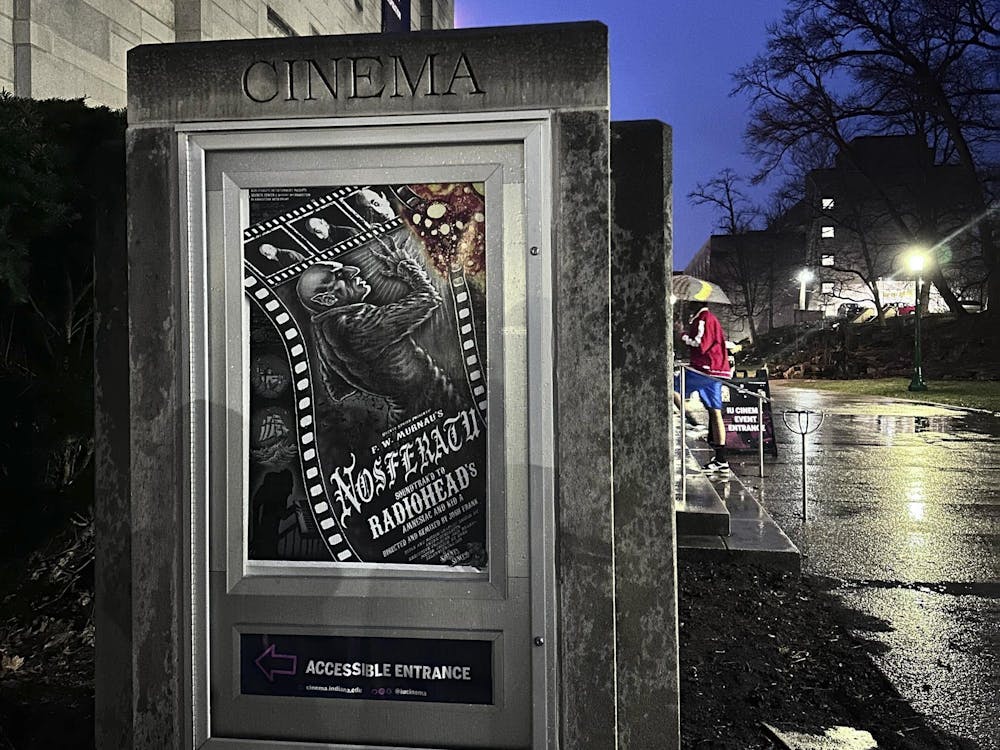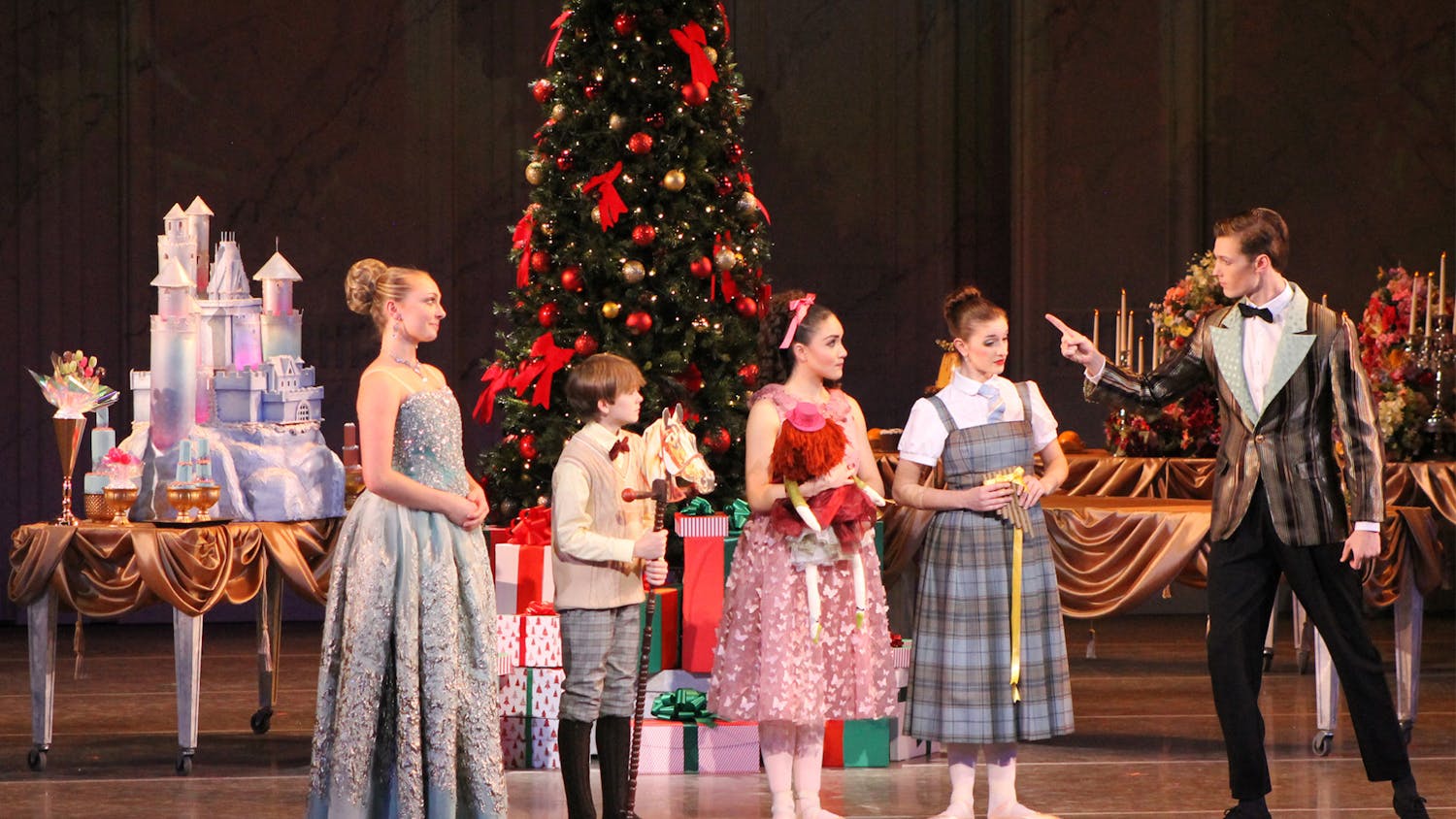The only weather truly suited for a screening of "Nosferatu" is a torrential downpour. The darkness and wet streets created the perfect mood for the vampire film classic. Strangely enough, when I went to see "Nosferatu" at IU Cinema on Tuesday, it wasn’t my first time watching the 1922 silent horror film. My first viewing was in December, a deliberate preparation for Robert Eggers’ highly anticipated 2024 remake..
What made this screening unique was the pairing of F.W Murnau’s German Expressionist film with music from Radiohead’s “Kid A” and “Amnesiac” albums. It was a part of Silents Synced, a film series that pairs classic silent movies with rock soundtracks.
Josh Frank, the creator of the series and owner of the Blue Starlite Drive-in in Austin, Texas, introduced the film with a note on the importance of supporting independent cinema. Frank grew up in the days of midnight movies, finding community with the people that also wanted a new cinematic experience. Now, he is one of the creatives that makes them.
Despite the gloomy weather, the theater was packed. I ended up having to sit in the very first row, not my ideal choice of seat, but thanks to IU Cinema’s setup, my view remained unobstructed.
Nosferatu’s story is a classic. Ellen and Thomas Hutter are a happy couple. Hutter is sent to Transylvania (of course), by his employer in order to sell a plot of land to a client, Count Orlok. On Hutter’s journey, he learns that the townspeople are scared by the very mention of Orlok’s name. His carriage also refuses to take him all the way to Orlok’s castle. Hutter meets the extremely creepy Orlok and attempts to sell the property. Orlok notices a photo of Ellen and is immediately obsessed, pointing out her “lovely neck.” After these events, it is confirmed that Orlok is a vampire and soon chaos erupts as he heads to Hutter and Ellen’s small town. Did I mention, he also brought the plague?
Watching "Nosferatu" in 2025, it is easy to find the humor in the creature that is Nosferatu/Count Orlok. If you look up an image of Max Schreck’s portrayal, he is comically creepy, a far cry from Bill Skarsgård’s gritty 2024 portrayal. You have to put yourself in a world before vampire culture became mainstream. Forget the kitschy vampiric stereotypes and the countless teen movies or shows you love to hate.
This version of the vampire is stiff, endlessly lurking and invokes genuine fear in our characters. So, while audiences in the IU Cinema laughed when Count Orlok attempted to suck the blood off of protagonist Hutter’s injured finger, I could only assume that in 1922, that moment was bone-chilling.
I talked with IU seniors Malak Shurbaji and Sophia Piper, and they said they partly came to listen to their favorite band, Radiohead.
“I was exploring the options that IU has to offer in terms of seeing films as it’s something I’ve been trying to devote more time to lately,” Piper said. “I’m really into Radiohead so when I saw this on the website in conjugation with a film I’d never seen before, I thought it would be a great place to start.”
For Shurbaji, like Piper, she was intrigued by the pairing of the band’s music with a film she had never seen before.
“Sophia sent me the link and I was interested because it’s something different than going out at night or staying in,” Shurbaji said. “I was enticed because of the Radiohead soundtrack.”
Pairing this film with Radiohead was the perfect choice. It added an entirely new dimension to the film, one that is grungy and haunting. “Kid A” and “Amnesiac” are not your typical Radiohead albums. You aren’t going to hear “Creep” play in this film. These albums are very experimental, electronic and almost glitchy in their overall sound. This evokes a feeling of uneasiness that perfectly aligned with the creepiness of the film.
Silents Synced is not just the soundtrack, but it aligns visual effects to the film. The black and white film featured vibrant reds and greens in specific scenes illuminating action. Although a cool experience, it was not the easiest of watches. I had already seen the film, so I was almost giddy in anticipation for the scenes to come. Piper said she did not share the exact same sentiment.
“I think purely because this was such an old movie with outdated editing and film styles, it was a bit slow at some points, but it does go to credit how far we’ve come with making things look realistic in films,” Piper said. “I couldn’t imagine what this must have felt like to watch this in the 1920s.”
The technological advancements made in film do make one appreciate the original craft of editing a film. With each cut, I imagined the physical act of splicing film — something filmmakers had to do by hand in that era. While the acting and script felt absurd by today’s standards, you had to give credit to Murnau, he truly excelled in crafting a visually striking film. Paired with Radiohead, it became all the more surreal, showcasing the importance of soundtrack in film.




